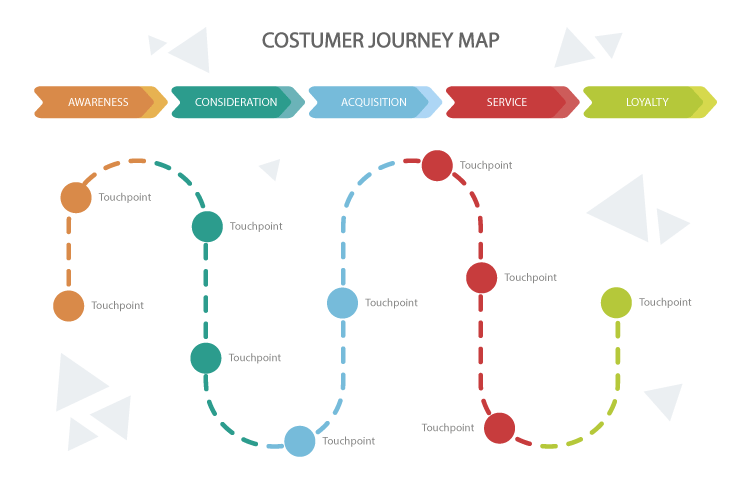How Can You Analyze Customer Feedback: The Complete 2026 Guide
Customer feedback is a goldmine of insights that can help businesses understand their customers better, identify areas for improvement, and make data-driven decisions.
According to recent research, 80% of consumers are more likely to do business with companies that offer personalized experiences, and 91% of customers rely on online reviews for purchase decisions. Perhaps most importantly, 96% of consumers say customer service plays a crucial role in their brand loyalty decisions.
Yet despite these insights, 59% of customers abandon brands after just two negative service experiences. The stakes are high: organizations implementing effective customer feedback analysis report 25% improvements in retention rates and 38% more consumer spending, making strategic feedback analysis essential for competitive advantage.
How can you analyze customer feedback in today’s competitive landscape? In 2025, with AI sentiment analysis accuracy reaching 90% and the sentiment analysis market projected to grow to $11.3 billion by 2026, modern customer feedback analysis approaches have transformed how businesses gather and act on customer insights. This comprehensive guide will walk you through proven methods to analyze customer feedback effectively, measure success, and turn insights into a competitive advantage.
Importance of Analyzing Customer Feedback
Understanding how you can analyze customer feedback is a crucial aspect of any business looking to improve customer satisfaction levels and make better strategic decisions. Not only does it provide valuable insights into customer expectations and preferences, but it also helps businesses to identify gaps in their products or services and make necessary improvements. Here are some key reasons why analyzing customer feedback is important:
- Enhancing customer experience: By analyzing feedback, businesses can understand what customers like or dislike about their products or services. This direct insight allows companies to make targeted improvements that resonate with their audience. When customers see their suggestions implemented, they feel valued and appreciated, strengthening their connection to your brand.
- Identifying areas for improvement: Customer feedback acts as a roadmap for continuous improvement. Recurring complaints or suggestions pinpoint specific areas where your products, services, or processes need refinement. Rather than guessing what needs improvement, you have direct input from the people who matter most, your customers.
- Building customer loyalty and Retention: When customers feel heard and valued, they are more likely to develop a sense of loyalty towards a brand. Analyzing customer feedback allows businesses to address any concerns promptly, leading to increased customer satisfaction and loyalty.
- Spotting trends and patterns: Analyzing customer feedback helps identify recurring themes or patterns in customer opinions. This can provide valuable insights into emerging trends, customer preferences, or potential market opportunities. Businesses can then adapt their strategies accordingly to stay ahead of the competition.
- Making data-driven decisions: The data collected through customer feedback analysis is a goldmine of information that can inform your business decisions. By making decisions based on real customer insights rather than assumptions, you can ensure that your actions align with what your customers desire and need. This data-driven approach significantly improves business performance and profitability.
- Improving communication and transparency: Actively listening to customer feedback and taking it into account demonstrates a commitment to open communication and transparency. It shows customers that their opinions matter and can help foster trust and goodwill between a business and its customers.
- Driving Innovation and Competitive Advantage: Customer feedback reveals unmet needs and untapped opportunities that fuel your innovation pipeline. Companies that prioritize systematic feedback analysis consistently outperform competitors by 2-3x in customer satisfaction and revenue growth. By staying attuned to evolving customer preferences, you position your business as an industry leader.
Support Genix
WordPress Support Ticket Plugin
Take Your Customer Support to The Next Level and Boost Customer Satisfaction Rates
Why AI & Automation Are Changing Customer Feedback Analysis in 2025
Customer feedback analysis has evolved dramatically with advances in artificial intelligence and machine learning. What once required hours of manual review can now be processed in seconds.
How AI Enhances Feedback Analysis
Speed and Scale: Traditional manual analysis cannot keep pace with the volume of feedback generated across modern customer touchpoints. AI algorithms can process thousands of feedback entries simultaneously, extracting patterns and insights that would take human analysts weeks to discover. AI-powered feedback systems reduce response latency by up to 38%, enabling organizations to address customer concerns in real-time.
Accuracy and Consistency: Machine learning models for sentiment analysis have reached 90% accuracy in 2025, narrowing the gap between machine and human judgment. This accuracy enables reliable decision-making at scale. Companies implementing hybrid systems combining AI with human review report 22% higher user trust in sentiment analysis results compared to pure machine learning approaches.
Real-Time Processing: Modern AI enables continuous feedback analysis rather than static snapshots. Real-time sentiment analysis allows organizations to identify issues as they emerge, respond to customer concerns immediately, and prevent problems from escalating. Research shows that 73% of companies using AI-powered feedback tools report a 45% lift in customer satisfaction scores.
Predictive Intelligence: Beyond analyzing current feedback, AI can predict future trends and identify at-risk customers before they churn. Predictive analytics helps organizations proactively address issues, anticipate customer needs, and guide product development efforts based on emerging patterns rather than reactive feedback alone.
The Statistics Behind AI Adoption
- According to Qualtrics, 85% of organizations with Voice of Customer programs now use AI-powered sentiment analytics.
- Research by Salesforce, 67% of global marketers plan to increase investment in AI-powered sentiment analysis tools in 2025.
- According to Gartner, Organizations using accurate sentiment analysis see 15% higher customer retention rates.
- The sentiment analysis market is growing from $2.1 billion (2024) to an estimated $11.3 billion by 2026.
10 Ways to Analyze Customer Feedback Effectively

Customer feedback analysis is an essential aspect of any business. Knowing how customers feel about the products and services you offer helps you make better decisions and improve the overall experience for your customers. So, how can you analyze customer feedback?
Sentiment Analysis
Sentiment analysis is the process of analyzing textual data to determine the emotional tone expressed in customer feedback. It classifies comments as positive, negative, or neutral, helping businesses gauge customer emotions and satisfaction levels.
How It Works: AI-powered sentiment analysis tools scan customer reviews, survey responses, and social media comments to detect emotional language. These tools identify sentiment-bearing words (“happy,” “love,” “disappointed,” “hate”) and examine their context to determine overall sentiment.
Types of Sentiment Analysis:
- Standard Sentiment Analysis: Basic classification (positive, negative, neutral)
- Aspect-Based Sentiment Analysis: Identifies specific elements mentioned and assesses sentiment attached to each (e.g., satisfied with durability, dissatisfied with shipping time)
- Intent-Based Sentiment Analysis: Emphasizes the underlying goal or intention (e.g., “this feature doesn’t work” indicates both complaint and feature improvement request)
- Emotion Detection: Identifies specific emotions (joy, anger, sadness, frustration) beyond general sentiment
Text Mining
Text mining is a data mining technique that extracts valuable information from unstructured text. Unlike sentiment analysis (which focuses on emotional tone), text mining identifies themes, patterns, and insights within large volumes of customer feedback.
With text mining, you can sift through the unstructured data and extract valuable insights that can help improve your customer service.
Key Text Mining Techniques:
- Keyword Extraction: Identifies frequently appearing terms to pinpoint trends, concerns, or interests
- Topic Modeling: Categorizes feedback into themes to uncover underlying patterns
- Named Entity Recognition (NER): Identifies specific entities (brand names, products, locations, people) mentioned in feedback
- Clustering: Groups similar feedback together to identify recurring themes
Practical Application: If customers mention “battery life” and “camera quality” frequently, text mining reveals these are key decision drivers. Marketing teams can then emphasize these features in campaigns targeting specific segments.
Categorization and Tagging
Manual or automated categorization organizes feedback into logical buckets for easier analysis and action. This systematic approach ensures no feedback falls through the cracks.
Categorization Methods:
- By Channel: Website feedback, email, social media, support tickets, surveys
- By Topic: Product feedback, service feedback, pricing feedback, support feedback
- By Customer Segment: Enterprise customers, small businesses, individual users
- By Urgency: Critical issues, high priority, medium priority, low priority
With this method, companies can always strive to provide the best possible customer service experiences while also building strong relationships and loyalty with their customers.
Best Practice: Use consistent tagging systems across your organization. When feedback is properly categorized, you can identify which issues affect which customer segments and prioritize improvements accordingly.
Thematic Analysis
Thematic analysis goes deeper than sentiment analysis by identifying and analyzing recurring themes and patterns within qualitative feedback. It uncovers the “why” behind customer sentiment.
How It Works:
- Reading and Familiarization: Review all feedback to become familiar with the content.
- Coding: Identify meaningful units and assign codes/labels
- Theme Identification: Group related codes into broader themes
- Theme Analysis: Understand what each theme represents and its significance
- Integration: Connect themes to overall feedback landscape.
Why It Matters: While sentiment analysis tells you “customers are unhappy” (negative), thematic analysis reveals “customers are unhappy because checkout process is confusing” (actionable insight).
Quantitative Analysis
Quantitative analysis focuses on numerical data extracted from feedback, using statistical methods to identify patterns and measure satisfaction objectively.
Key Metrics for Quantitative Analysis:
- Customer Satisfaction Score (CSAT): Direct measure of satisfaction (1-5 or 1-10 scale)
- Net Promoter Score (NPS): Measures likelihood of recommending your business (0-10 scale)
- Customer Effort Score (CES): Measures how easy it is to get support (1-5 scale)
- Response Rate: Percentage of customers providing feedback
- Average Response Time: How quickly you respond to feedback
Statistical Methods:
- Mean and median calculations
- Distribution analysis (normal, skewed)
- Correlation analysis (feedback patterns vs. business outcomes)
- Trend analysis (satisfaction over time)
Customer Journey Mapping

Customer journey mapping visualizes the entire customer experience, identifying touchpoints where feedback is generated and opportunities for improvement. This method reveals how different pieces of feedback relate to specific stages of the customer relationship.
Steps for Effective Mapping:
- Identify Key Stages: Awareness, consideration, purchase, onboarding, usage, retention, advocacy
- Map Touchpoints: Where customers interact with your business at each stage
- Collect Feedback: Gather feedback specific to each touchpoint
- Identify Pain Points: Recognize where customers experience friction or frustration
- Find Opportunities: Spot where improvements would have maximum impact
Benefit: Customer journey mapping reveals that a positive onboarding experience significantly impacts long-term retention, so investing in onboarding improvements yields outsized returns.
Net Promoter Score (NPS)
Another effective way of measuring customer satisfaction is through the use of the Net Promoter Score (NPS). NPS (Net Promoter Score) is a widely-adopted metric that measures customer loyalty and the likelihood that customers will recommend your business to others. It’s simple but powerful.
How NPS Works:
NPS is calculated with a single question: “On a scale of 0-10, how likely are you to recommend [company/product] to others?”
Customers are then segmented into three categories:
- Promoters (9-10): Loyal, enthusiastic customers who actively promote your business through word-of-mouth
- Passives (7-8): Satisfied but not enthusiastic customers who may be swayed by competitors
- Detractors (0-6): Unhappy customers at risk of churn who may spread negative word-of-mouth
NPS Calculation: (% Promoters – % Detractors) = NPS Score
Benchmarking:
- NPS -100 to -1: Poor (needs immediate improvement)
- NPS 0 to +9: Average (mixed feelings, limited promotion)
- NPS +10 to +49: Good (positive perception, room to improve)
- NPS +50 to +69: Very Good (strong loyalty, high satisfaction)
- NPS +70 to +100: Excellent/World-class (very high loyalty, strong advocacy)
Key Insight: Every 10-point increase in NPS correlates with 5-8% revenue growth, making NPS improvement a strategic business priority.
Qualitative Analysis
Qualitative analysis examines non-numerical feedback to understand customer motivations, emotions, and experiences in depth. It answers “why” questions that numbers alone cannot.
Qualitative Methods:
- Open-Ended Survey Responses: Unstructured text revealing customer thoughts
- Customer Interviews: One-on-one conversations providing rich insights
- Focus Groups: Small group discussions exploring customer perspectives
- Observation: Watching customers interact with your product or service
- Case Study Analysis: In-depth examination of specific customer experiences
When to Use: When you need to understand the deeper reasons behind customer behavior, such as why high-value customers are churning or what emotional drivers create brand loyalty.
Social Media Listening
When it comes to understanding customer feedback, social media listening has become an essential strategy for businesses to gain real-time insights into customer opinions and brand reputation. Social media listening (also called social media monitoring) involves tracking brand mentions, comments, and conversations across social platforms to understand customer sentiment and identify emerging trends.
Monitoring Platforms:
- Twitter/X, Facebook, Instagram, LinkedIn (major platforms)
- Reddit and forums (niche communities)
- YouTube comments (video feedback)
- TikTok (younger demographics)
- Industry-specific platforms
What to Monitor:
- Direct brand mentions
- Competitor mentions (comparative sentiment)
- Product feedback
- Industry trends and discussions
- Influencer conversations about your space
Key Advantage: Social media listening captures unfiltered customer sentiment—what customers say about you when you’re not explicitly asking. This reveals authentic opinions and emerging issues.
Customer Feedback Surveys
In today’s ultra-competitive business world, companies must actively seek feedback from their customers to stay ahead of the competition. Customer feedback surveys are structured questionnaires designed to collect specific feedback systematically. They enable quantitative analysis and allow comparison over time.
Types of Feedback Surveys:
- Post-Purchase Surveys: Measure satisfaction immediately after purchase
- Product Feedback Surveys: Gather specific product experience insights
- Service Quality Surveys: Assess support, delivery, and service aspects
- NPS Surveys: Measure customer loyalty
- CSAT Surveys: Gauge satisfaction with specific interactions
- Exit Surveys: Understand why customers leave or reduce engagement
Survey Best Practices:
- Keep surveys short (5-10 questions maximum)
- Use clear, unambiguous language
- Offer multiple response formats (ratings, open-ended, multiple choice)
- Time surveys appropriately (post-interaction while fresh)
- Provide incentives for completion
- Make surveys mobile-friendly
Survey Tools: Typeform, SurveyMonkey, Google Forms, Qualtrics, Survicate
Measuring Success: Key Metrics for Customer Feedback Analysis
Implementing customer feedback analysis is only valuable if you measure its impact. Track these essential metrics:
Feedback Response Metrics
Response Rate: Percentage of feedback receiving acknowledgment
- Target: 100% for complaints; 80%+ for general feedback
- Impact: Responding to feedback increases retention by 14%
First Response Time (FRT): How quickly you acknowledge feedback
- Target: 24-48 hours for most channels
- Impact: Faster responses increase satisfaction by up to 85%
Time to Resolution (TTR): Total time from feedback to issue resolution
- Target: 30% faster than current average
- Impact: Directly correlates with customer satisfaction and retention
Customer Satisfaction Metrics
Customer Satisfaction Score (CSAT): Direct measure of satisfaction post-interaction
- Target: 80%+ (excellent: 90%+)
- Impact: CSAT scores above 80% correlate with higher retention
Net Promoter Score (NPS): Measures likelihood of recommending your business
- Target: 50+ (good), 70+ (excellent)
- Impact: Every 10-point NPS increase = 5-8% revenue growth
Customer Effort Score (CES): Measures ease of support and service
- Target: 70+
- Impact: Lower effort correlates with higher retention and loyalty
Business Impact Metrics
Customer Retention Rate: Percentage of customers retained after feedback interaction
- Target: 90%+ retention after positive response
- Impact: Responding well to complaints retains 80% of dissatisfied customers
Customer Lifetime Value (CLV): Total revenue expected from customer relationship
- Track: Changes as feedback implementation matures
- Impact: Improved customer experience increases lifetime value significantly
Churn Prevention: Customers retained due to effective feedback response
- Impact: Preventing churn is 5-7x cheaper than acquiring new customers
Cost Per Contact: Support efficiency metric
- Benchmark: Leading teams achieve 10-second first response and 32-minute resolution
Closing the Feedback Loop: Why It Matters
Collecting and analyzing customer feedback is only half the battle. The critical final step—communicating actions back to customers—often gets overlooked despite its dramatic impact.
What Is Closing the Feedback Loop?
Closing the feedback loop means responding to customers by:
- Acknowledging their feedback with genuine appreciation
- Explaining what action you took (or will take) in response
- Sharing outcomes and improvements made based on their input
- Following up to confirm satisfaction with resolution
Why It’s Essential
Organizations that consistently close the feedback loop experience:
- 30% higher response rates on future feedback requests
- 25% improvement in customer retention when feedback leads to visible action
- Significantly stronger customer loyalty metrics
- Enhanced brand reputation and trust
Customers who feel heard and see their feedback lead to change become your most loyal advocates.
How to Close the Loop Effectively
Step 1: Respond Promptly Acknowledge feedback within 24-48 hours. Speed signals that you genuinely value customer input.
Step 2: Show Understanding Reflect back what the customer said. This demonstrates you listened and understood their concern.
Step 3: Explain Your Action Specifically describe what you did or plan to do. Vague assurances undermine trust; concrete actions build it.
Step 4: Share Results When you implement changes based on feedback, tell customers specifically how their input led to improvement.
Step 5: Follow Up For significant complaints, reach out again after taking action to confirm satisfaction with resolution.
Best Practices for Analyzing Customer Feedback in 2026
Implement a Multi-Channel Feedback Strategy
Collect feedback across all customer touchpoints:
- Website feedback forms for direct input
- Email surveys for post-interaction feedback
- Social media monitoring for unsolicited opinions
- Support ticket analysis for problem-oriented feedback
- In-app feedback for product experience insights
- Phone/chat feedback for real-time interaction feedback
Multi-channel collection ensures you capture comprehensive customer sentiment.
Prioritize Data Quality and Accuracy
- Use reliable survey instruments with clear, unambiguous questions
- Ensure representative sample sizes for statistical validity
- Validate sentiment analysis tools before deployment
- Implement quality checks on manual coding or categorization
- Document methodology for consistency and reproducibility
Combine Quantitative and Qualitative Analysis
- Quantitative data tells you “what” (scale of issues, satisfaction levels)
- Qualitative data tells you “why” (reasons behind sentiment, root causes)
Using both approaches together provides the complete picture needed for effective decision-making.
Create Actionable Insights
Raw data is meaningless without action. Transform feedback into:
- Specific improvement initiatives with timelines
- Resource allocation decisions based on impact and frequency
- Product roadmap priorities informed by customer needs
- Process improvements addressing customer pain points
- Marketing message refinement based on what resonates with customers
Share Insights Across the Organization
Customer feedback analysis only drives change when insights reach decision-makers:
- Share dashboards with real-time feedback metrics
- Present quarterly reports to leadership with key findings
- Involve teams in reviewing feedback relevant to their function
- Create a feedback-driven culture where the customer voice influences decisions
- Close the loop publicly, showing customers their feedback created change
Customer Feedback Analysis Tools for 2026
Modern customer feedback analysis requires the right technology stack. Key tool categories:
Sentiment Analysis Tools
- Zendesk Sentiment Analysis – Integrated with support platform
- Qualtrics – Enterprise-grade VoC program management
- Brand24 – Social listening and sentiment tracking
- SentiSum – AI-powered sentiment and emotion detection
Survey and Feedback Collection
- Typeform – User-friendly survey creation
- SurveyMonkey – Comprehensive survey platform
- Google Forms – Free, accessible survey tool
- Qualtrics XM – Advanced feedback collection
Social Media Monitoring
- Sprout Social – Comprehensive social management
- Hootsuite – Multi-channel social listening
- Brandwatch – Deep social insights and trends
- Mention – Real-time brand monitoring
CRM and Support Integration
- Intercom – Customer communication and feedback
- Zendesk – Help desk with feedback integration
- HubSpot – CRM with feedback management
- Support Genix – WordPress support ticket system for customer interaction tracking.
Frequently Asked Questions
What is the difference between sentiment analysis and thematic analysis?
Sentiment analysis measures emotional tone (positive, negative, neutral), while thematic analysis identifies recurring topics and patterns. Sentiment detects “customer upset,” thematic reveals “upset about checkout.” Combine both for 15-20% better accuracy in identifying improvement opportunities.
How do I implement customer feedback analysis with limited resources?
Start simple using free tools (Google Forms, IBM Watson NLU). Phase approach: Weeks 1-2 collect and manually review, weeks 3-4 add free automation, month 2+ invest in paid tools after ROI validation. Even 5-person teams successfully implement using AI for initial categorization plus human review.
What are the most common mistakes in customer feedback analysis?
Common mistakes:
(1) Listening to vocal minorities instead of data trends,
(2) Not responding to customers (reduces feedback 30%),
(3) Analyzing without action,
(4) Using sentiment alone without context,
(5) Not measuring impact,
(6) Poor survey design. Combine quantitative + qualitative data and close feedback loops.
How can I analyze customer feedback at scale using AI?
To analyze customer feedback in 4 steps:
(1) Choose AI tool with 85%+ accuracy,
(2) Train model with 100-200 manually tagged entries,
(3) Automate collection with AI tagging/scoring,
(4) Have humans review flagged high-priority items. Results: 60% time reduction, 15% accuracy improvement, 20+ hours saved weekly.
How often should I analyze customer feedback?
Real-time monitoring for critical issues, daily review (15-30 min) for urgent feedback, weekly analysis (2-3 hours) for trends, monthly reporting with metrics for leadership, quarterly review for year-over-year comparison. Daily + weekly cadence balances responsiveness with strategic planning.
What metrics demonstrate the success of customer feedback analysis?
Track three categories:
(1) Customer metrics (NPS target 50+, CSAT 80%+, retention 90%+),
(2) Response metrics (24-48hr response, 70%+ first contact resolution),
(3) Business impact (5-8% revenue per NPS point, 5-7x churn prevention ROI). Monitor weekly, report monthly.
Support Genix
WordPress Support Ticket Plugin
Take Your Customer Support to The Next Level and Boost Customer Satisfaction Rates
Final Thoughts
Customer feedback analysis has evolved from an optional “nice-to-have” to an essential business function. In 2025, with AI reaching 90% sentiment accuracy and organizations increasingly competing on customer experience, the companies that effectively analyze, act on, and close the loop on customer feedback will outperform competitors by 2-3x.
The ten methods outlined in this guide—sentiment analysis, text mining, categorization, thematic analysis, quantitative analysis, customer journey mapping, NPS, qualitative analysis, social media listening, and surveys- provide a comprehensive toolkit for understanding your customers deeply.
But analysis alone isn’t enough. The real competitive advantage comes from:
- Collecting feedback systematically across all touchpoints
- Analyzing insights rigorously using both AI and human intelligence
- Measuring impact with clear metrics
- Closing the feedback loop so customers see action taken
- Building a feedback-driven culture where customer voice shapes strategy
Organizations implementing systematic customer feedback analysis report 25% improvement in retention rates and 38% more consumer spending—a direct return on investment that pays for itself many times over.
By implementing these practices today, you’re positioning your business not just to survive but to thrive in the competitive landscape ahead. Your customers are telling you exactly what they need—you now have the knowledge and tools to listen effectively and act decisively.

